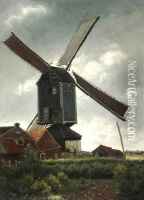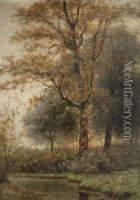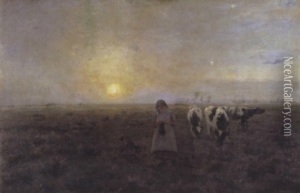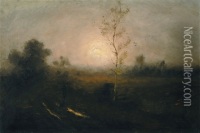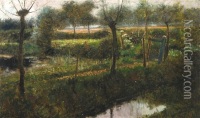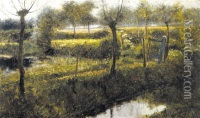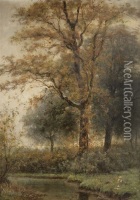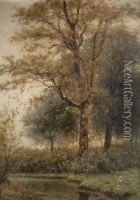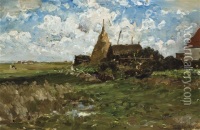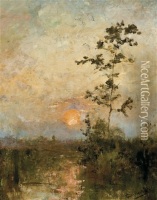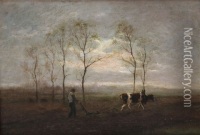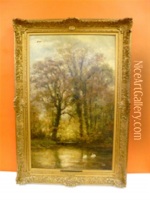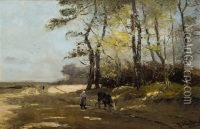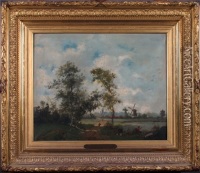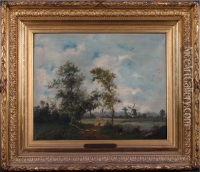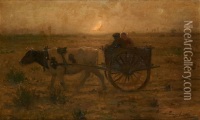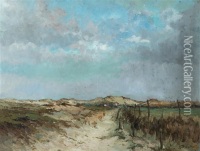Theodor Verstraete Paintings
Theodor Verstraete was a Belgian painter born on October 16, 1850, in Ghent. Recognized for his landscape paintings, Verstraete was a prominent figure in the art scene of his time, often associated with the Realist movement. His work often reflects a keen observation of rural life and the natural environment, imbued with a sense of realism and an attention to the changing qualities of light and atmosphere.
Verstraete's early years were marked by his education at the Royal Academy of Fine Arts in Antwerp, where he studied under the guidance of several influential artists such as Nicaise de Keyser. His style was heavily influenced by the Barbizon school, a group of French painters who espoused painting en plein air (outdoors) and focused on the beauty of the natural landscape. This influence is evident in Verstraete's dedication to capturing the essence of the Flemish countryside.
Throughout his career, Theodor Verstraete exhibited a profound love for the marshlands and polders of Belgium, often depicting them in different conditions and seasons. His ability to render the mood of a scene, from the somber tones of a winter landscape to the vibrant colors of a summer day, garnered him admiration from his contemporaries and art critics alike.
Verstraete's work was not limited to landscapes alone. He also illustrated the social conditions of his time, occasionally highlighting the plight of rural laborers. This aspect of his work resonates with the social realist movement, which aimed to draw attention to the lives of the working class.
The artist spent a significant part of his life in the village of Eksterlaar, where he continued to paint and draw inspiration from the surrounding landscape. His reputation grew, and his works were sought after by collectors and art enthusiasts.
Sadly, Theodor Verstraete's life was cut short when he died on January 12, 1907, in Antwerp. His legacy, however, lived on through his art, which continues to be celebrated for its contribution to the Realist tradition in Belgian painting. Today, his works can be found in various museums and galleries, offering a window into the rural landscapes and social conditions of late 19th-century Belgium.
